

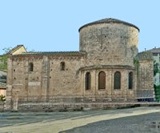
This church is built over a Roman structure (1st century AD) that was first excavated in 1909, when it was thought to have been a temple to the Sun. After a more extensive recent excavation, it became apparent that the structure was a Roman domus, perhaps a house church from the early Christian period.
According to the Liber Ponificalis, King Liutprand and Pope Zacharias confirmed their agreement in “oratorio Salvatoris intra ecclesia beati Petri” (in the oratory of San Salvatore, inside the church of St Peter) in 742. The church of San Salvatore might stand on the site of this ancient oratory. However, the church of St Peter seems to refer to the church that St Anthimus built in the 2nd century, and that was apparently outside the city walls.
Apart from this record, the earliest surviving documentation of San Salvatore dates to 1072.
Exterior
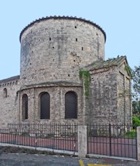
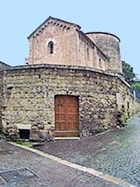
Interior
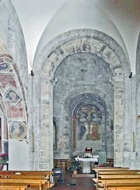
As noted above, the circular presbytery, which opens on to a rectangular apse, belongs to the original structure. The nave, which has two rectangular bays separated by an arch, was added in the 12th century.
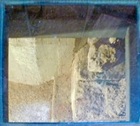
The high altar is formed from a Roman cippus that might originally have served as a Pagan altar.
Crucifixion (16th century)
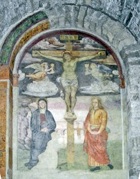
Frescoes in the presbytery
The frescoes on the walls between the windows include:
-
✴St Leonard (15th century);
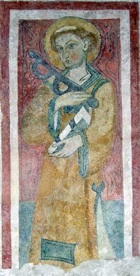
-
✴St Paul (13th century); and
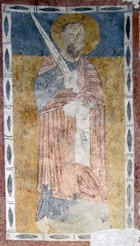
-
✴a lovely fragment (15th century) of the head of a saint.
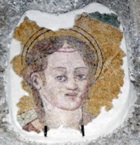
SS John the Baptist and Leonard (15th century)
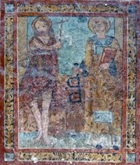
Cappella Manassei (14th century)
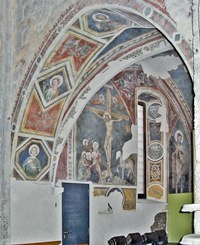
This large chapel was built to the left of the nave. The right side of the chapel was badly damaged in the bombardment of the Second World War.
Frescoes (14th century)
These newly restored frescoes are the autograph work of the so-called Maestro della Cappella Manassei. They depict:
-
✴the Crucifixion with the Virgin and St John the Evangelist (on the left);
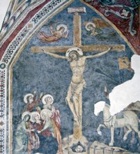
-
✴St John the Baptist (also on the left);
-
✴SS Mary Magdalene and Catherine of Siena (on the back wall):
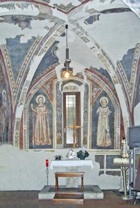
-
✴fragments of a Madonna and Child enthroned with the kneeling donor (on the right);
-
✴Christ blessing with St Agnes and three other female saints (under the entrance arch); and
-
✴Christ blessing and the symbols of the Evangelists (in the vaults).
Sacristy (17th century)
The sacristy is reached from the left of Cappella Manassei.
Detached frescoes (1640)
These damaged and detached frescoes by Ludovico Carosi are all that survives from the original decoration of what was the Cappella di San Vincenzo. They depict the apocalypse and the martyrdom of a saint.

